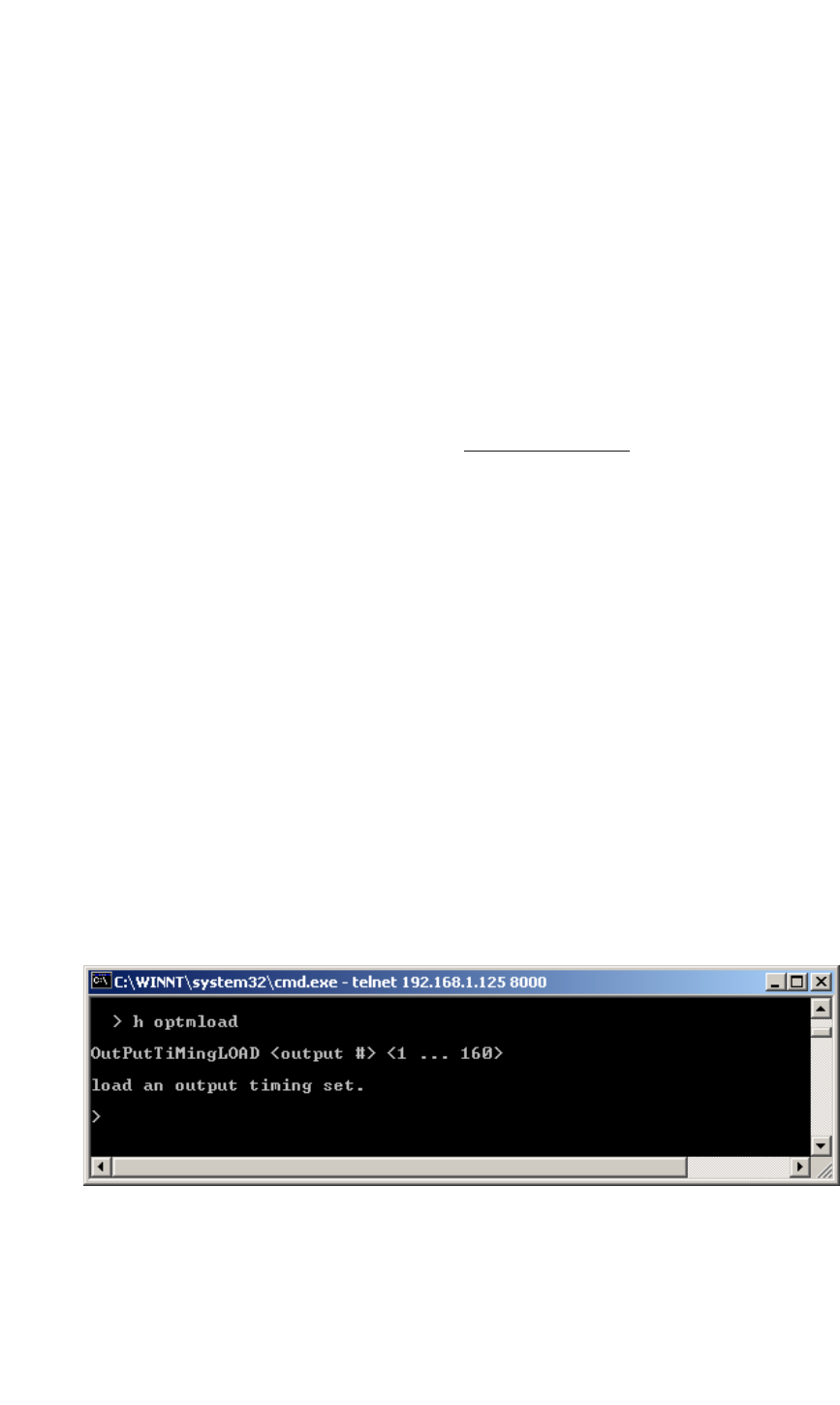Quadra User's Guide
Table Of Contents
- Table of Contents
- Introduction
- Installation and Setup
- Operations
- In This Chapter
- Introduction to Operations
- Setting Output Format
- Testing Outputs
- Selecting an Input Source
- Enabling and Disabling Outputs
- Understanding Auto Sync
- Cropping an Image
- Zooming an Image
- Panning an Image
- Sizing the Output Image
- Using Position
- Adjusting Brightness and Contrast
- Adjusting Hue and Saturation
- Adjusting Sharpness
- Creating a Background
- Creating a 2x2 Monitor Wall
- Command Line Interface
- Image Concepts
- Communications Setup
- Connector Types
- Firmware Upgrades and Troubleshooting
- Technical Specifications

OPERATIONS
Setting Output Format
350-7951 Quadra User’s Guide 30
. . . . .
2. To enable automatic detection and loading of a display timing set type
the following command (using upper or lower case characters).
H OPREF EDID Enter
• This will cause Quadra to read the preferred timing parameters from
your display device, and then search for a match in the Factory
Timing List. If it finds a match (for example, one that you have
previously stored), it selects and loads those parameters.
• If Quadra does not find a match in the “user entry” section, it searches
through all factory defined entries and loads the closest match.
These steps should be repeated for each of the Quadra output channels (1 - 4).
this command enables you to set the output display parameters, using values
that are stored in the system’s “Factory Timing List
.”
MANUALLY
LOADING OUTPUT
. . . . . . . . .
PARAMETERS
Use the following steps if you want to manually enter your own output
parameters:
1. Ensure that the display(s) that you want to set up are connected to
selected Quadra outputs.
2. Obtain a copy of the display device’s operations manual or technical
guide, and make a note of the following parameters: monitor type,
format (analog or digital), resolution, refresh rate, sync, sync polarity
and interlace.
3. To enable manual loading of a display timing set type the following
command (using upper or lower case characters).
H OPREF INT Enter
4. Using the command line interface, request help text for the command.
Using upper or lowercase characters, type:
H OPTMLOAD Enter
This action displays the command’s parameters and arguments in the
command window.
Figure 3-3.
Help Text — Output Timing Load Command
5. Show the timing list. Type:
TMLIST Enter










